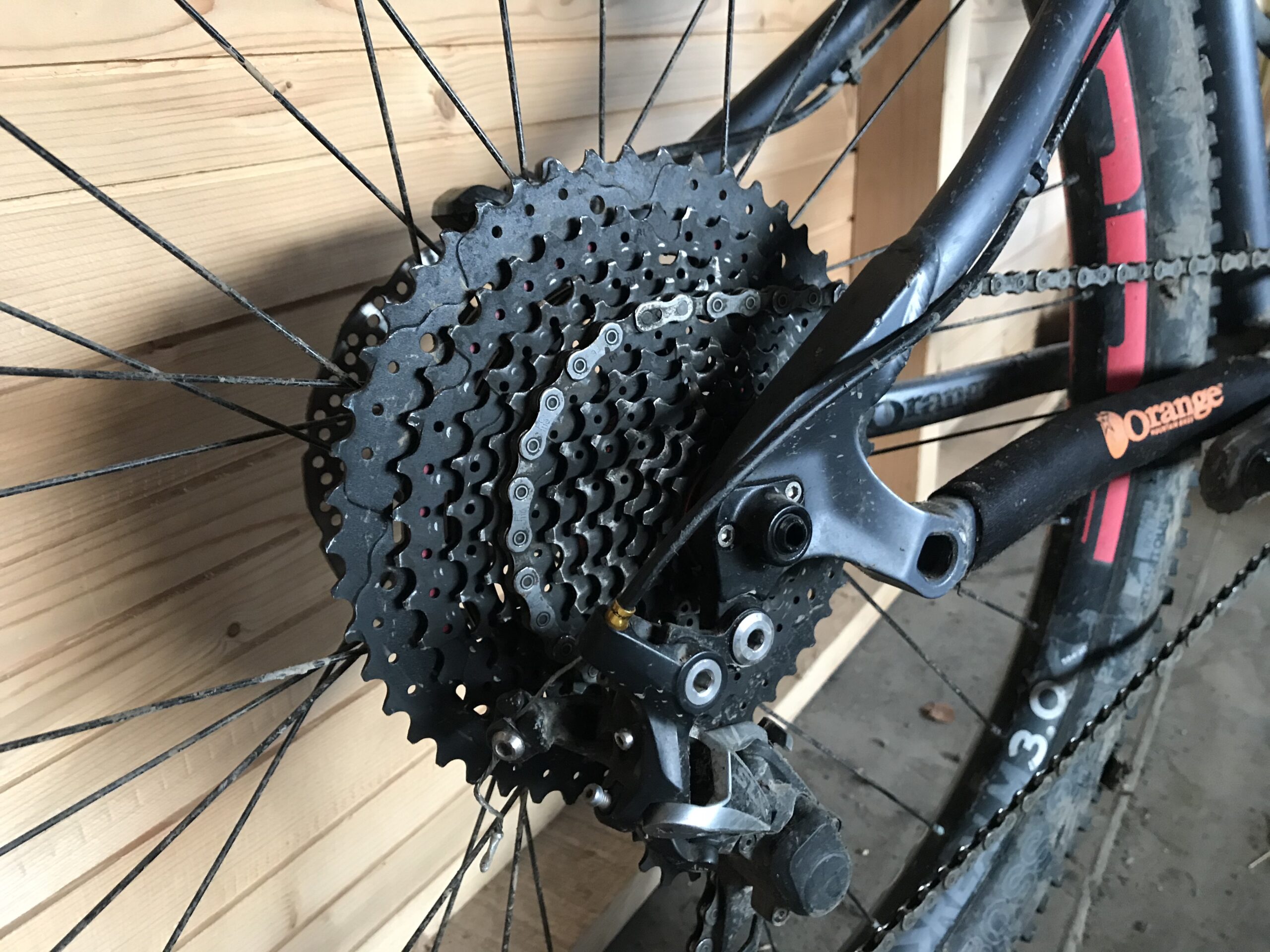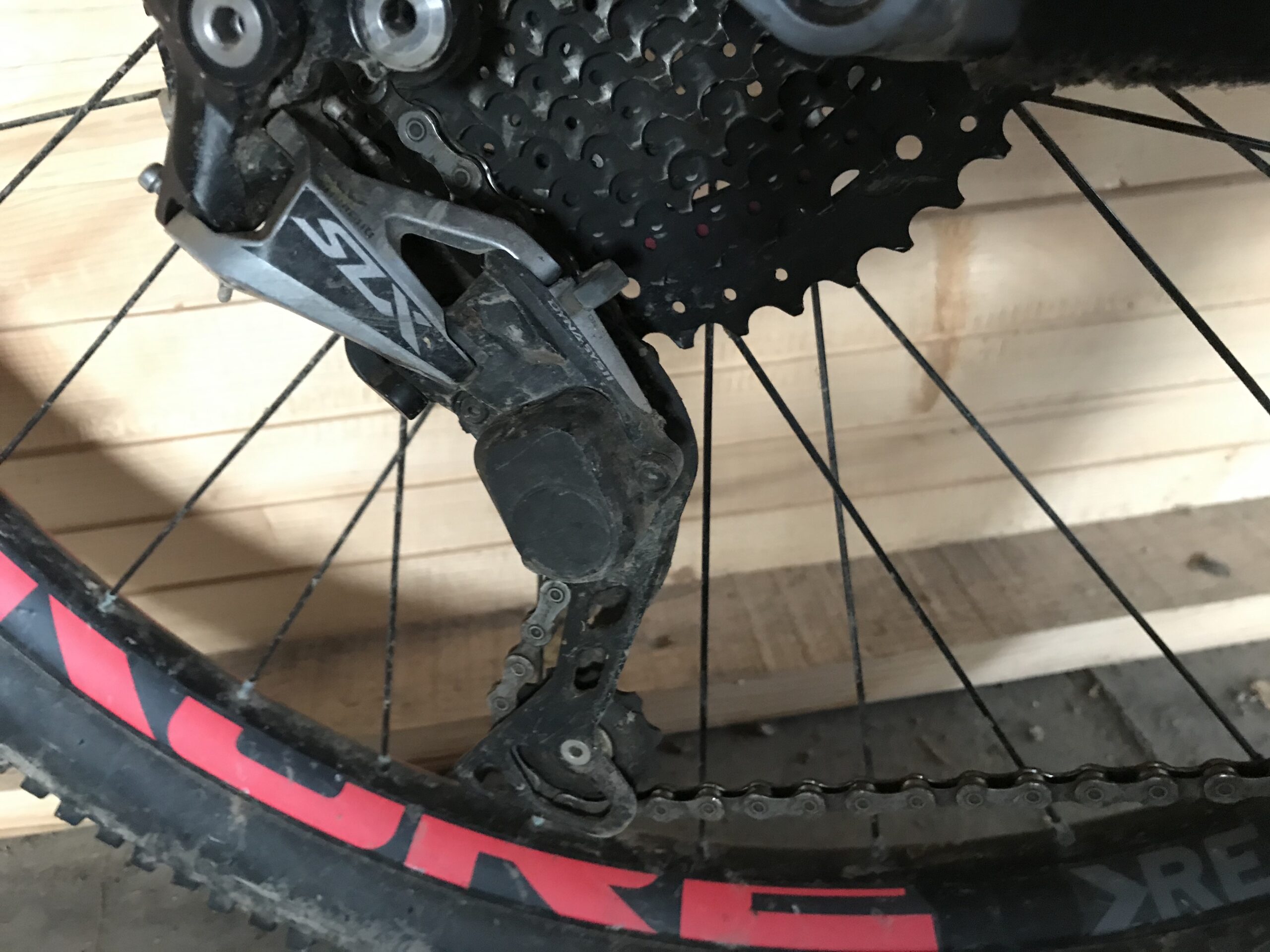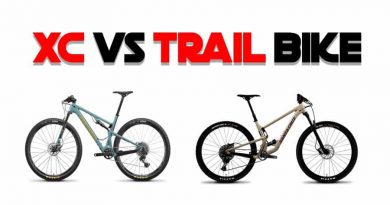Why Do Mountain Bikes Have No Front Derailleur? (Explained)
You have probably noticed many modern mountain bikes don’t have front derailleurs. As a result, modern mountain bikes have fewer gears, which is actually a big advantage.
Here are the reasons why you should remove your front derailleur :
- Why do Mountain Bikes Have no Front Derailleur?
- Are Front Derailleurs Necessary?
- When Did Mountain Bikes Lose the Front Derailleur?
- What is a Wide Range Cassette?
- What Is The Benefit of a Wide Range Cassette?
- What Does The Gear Percentage Mean On A Cassette?
- What is the Advantage of a Narrow-Wide Chainring?
- What Is The Advantage Of A Clutch Rear Derailleur On A Mountain Bike?
Why do Mountain Bikes Have no Front Derailleur?
Mountain bikes no longer have a front derailleur because of the invention of the wide range rear cassette, meaning you can have the same range of gears with fewer parts, which saves weight, and keeps things simpler. Also making the bike build look cleaner.
There are several other benefits to not having a front derailleur:
- More room for other shifters – Fewer levers for shifting means that there is room for other levers, for example, a dropper post or some form of suspension lockout, which have become increasingly popular in the last few years.
- Chain falls off less – If set up correctly, then it means that riders are less likely to have any issues with dropped chains. This is because you have a better chain line. which also makes the drivetrain feel smoother to pedal.
- Better for beginners – Giving them less to think about when they are simply trying to concentrate on riding. One lever is easier to deal with than two.
- Quieter ride – Another result of having fewer parts, and a better chain line is that it provides a quieter ride, allowing the rider to really immerse themselves in the riding experience and enjoy nature.
- Improved frame design – As front derailleurs became less common, it allowed suspension and frame designers to look at their designs in new ways. They were able to take back some of the space that had previously been taken up by a front derailleur. This freed them up in their design process and allowed them to improve their frame designs and the performance of their suspension. The decline in front derailleurs helped optimize bike design.
Around a similar time to when the front derailleur disappeared, the clutch derailleur and the narrow-wide chainring became popular. A wide-ratio cassette, paired with a clutch derailleur and a narrow-wide chainring became the most obvious choice for mountain bikes, due to the weight savings, drivetrain smoothness, and massively improved reliability.
Are Front Derailleurs Necessary?
These days front derailleurs are essentially not necessary, on mountain bikes at least. Now even high-end road bikes are starting to lose their front derailleurs.
- With a larger rear cassette, it’s possible to get the same number of gears without the need for a front derailleur. Therefore the arguments that a lack of derailleur means less range are no longer valid. The 1X11 and 1X12 drivetrains that were initially popularized by Shimano largely removed the need for the front derailleur in mountain biking.
- A larger front chainring helps with climbing, something for which the front derailleur is often used for.
When Did Mountain Bikes Lose the Front Derailleur?
SRAM stopped every aspect of front derailleur development back in 2015. However, It’s hard to pinpoint exactly when mountain bikes lost the front derailleur, as it was a gradual process. There was no set date when they simply disappeared.
- It is still possible to find bikes with front derailleurs, but they are increasingly less common as they get phased out more and more..
- Front derailleurs were an essential part of mountain bike development but have now largely fallen by the wayside as new products have taken their place.
- SRAM released a 12 speed Eagle groupset in 2016, which is when they announced that they had ceased manufacturing front derailleurs for mountain bikes.
- By 2017 many bike manufacturers were actively moving away from manufacturing bikes that were built to accommodate a front derailleur.
- As well as opening up design options, it also marginally reduced costs for manufacturers, which perhaps goes some way to explaining why so many manufacturers were quick to get on board with the idea.
- Even before manufacturers fully embraced the concept of bikes without a front derailleur, riders were already calling for this to be adopted as the norm.
What is a Wide Range Cassette?
The cogs on the back of a bike are known as the cassette. The range of a cassette is the variation between the largest and smallest cog. A wide range cassette is normally considered anything over 450% (11-46t). However, most people consider a wide range cassette anything over 500%+ (10-50t).

What Is The Benefit of a Wide Range Cassette?
The biggest benefit to a wide range cassette is no front derailleur, which saves weight, and keeps things clean and simple. You will have a more consistent chain line – which will make the drive train smoother and help prevent the chain from falling off.
What Does The Gear Percentage Mean On A Cassette?
The percentage figures on a cassette refer to the variation between the lowest and the highest gears (For example 11-50). To put it simply, you divide the number of teeth on the smallest cassette ring by the number of teeth on the largest cassette ring and then times it by one hundred.
If you are only using one chainring at the front this number represents the whole drive train.
What is the Advantage of a Narrow-Wide Chainring?
The advantage of narrow-wide chainrings is that they make the chain on the bike more secure and can prevent it from falling off, this is particularly true on more uneven terrain that mountain bikers often encounter.
But how do narrow-wide chainrings work?
Hows did a normal chainring work? Bike chains have inner and outer links. The links are different sizes, with the inner links being narrower than the outer links. On traditional chainrings, the teeth have to be narrow enough to fit the inner links of the chain. This means that the chain can move about on the chainring when on the larger, outer links, which can lead to the chain slipping off.
Traditionally this wasn’t a huge problem, as the front derailleur served to keep the chain in place most of the time. However, bikes with a single ring set up don’t have the benefit of the front derailleur helping to keep the chain in place. Therefore, dropping the chain can be a more common problem when shifting gears or hitting bumps on the trail, which can be very inconvenient, especially if you need to add a quick pedal stoke before an uphill.
Narrow-wide chainrings solve this problem. They have alternating narrow and wide teeth, which fit the inner and outer teeth. This keeps the chain far more secure on the chainring. “Narrow-wide” therefore describes the shape of the individual teeth on the chainring – narrow, then wide, then narrow again. It is important to keep the narrow-wide chainring clear of mud in order to keep it functioning properly. If there is too much of a build-up of mud, then the chain might not sit correctly on the teeth of the chainring.
One possible alternative to narrow-wide chainrings is a chain guide, which also helps to keep the chain in place and prevent it from slipping off. However, a narrow-wide chainring helps to simplify things with one less thing to go wrong, and also saves weight.
What Is The Advantage Of A Clutch Rear Derailleur On A Mountain Bike?
The advantage of a clutch rear derailleur on a mountain bike is to keep the chain in place when riding over rougher terrain, such as the kind of terrain that is usually found on mountain bike trails.
- By tensioning the chain, the derailleur helps to eliminate chain slap – stopping the chain from hitting the chainstay, which can cause damage to the bike frame.
- It also helps to reduce the risk of the chain slipping when riding bumpy and uneven terrain.
- Clutch derailleurs are good for off-road conditions, such as mountain bikers typically encounter, but are not necessary for road cycling.
- In fact, they can cost efficiency when riding, so they are not suitable for road cycling as the benefits are outweighed by the downsides. They are therefore not at all common on road bikes.

Other posts you might be interested in:




